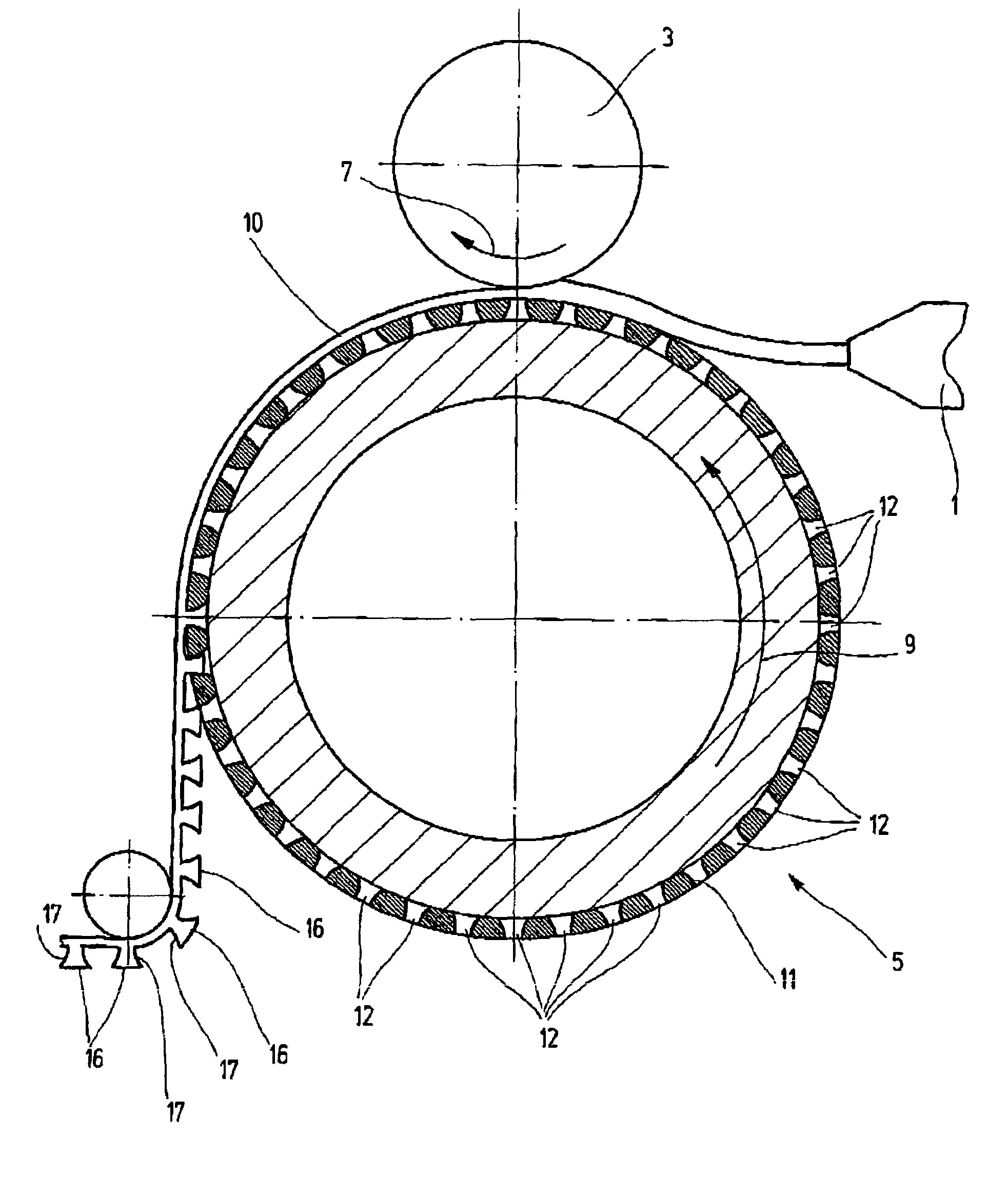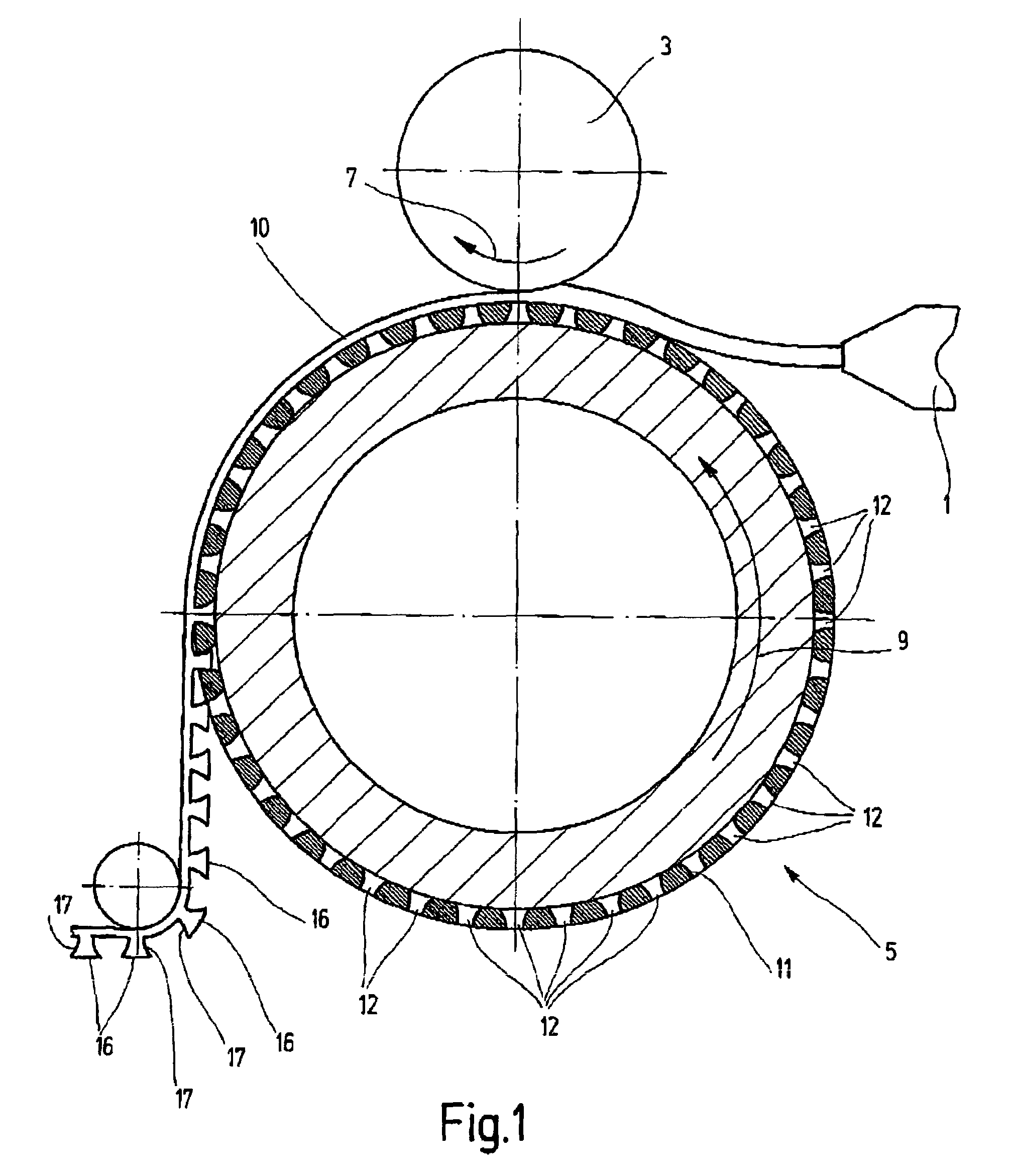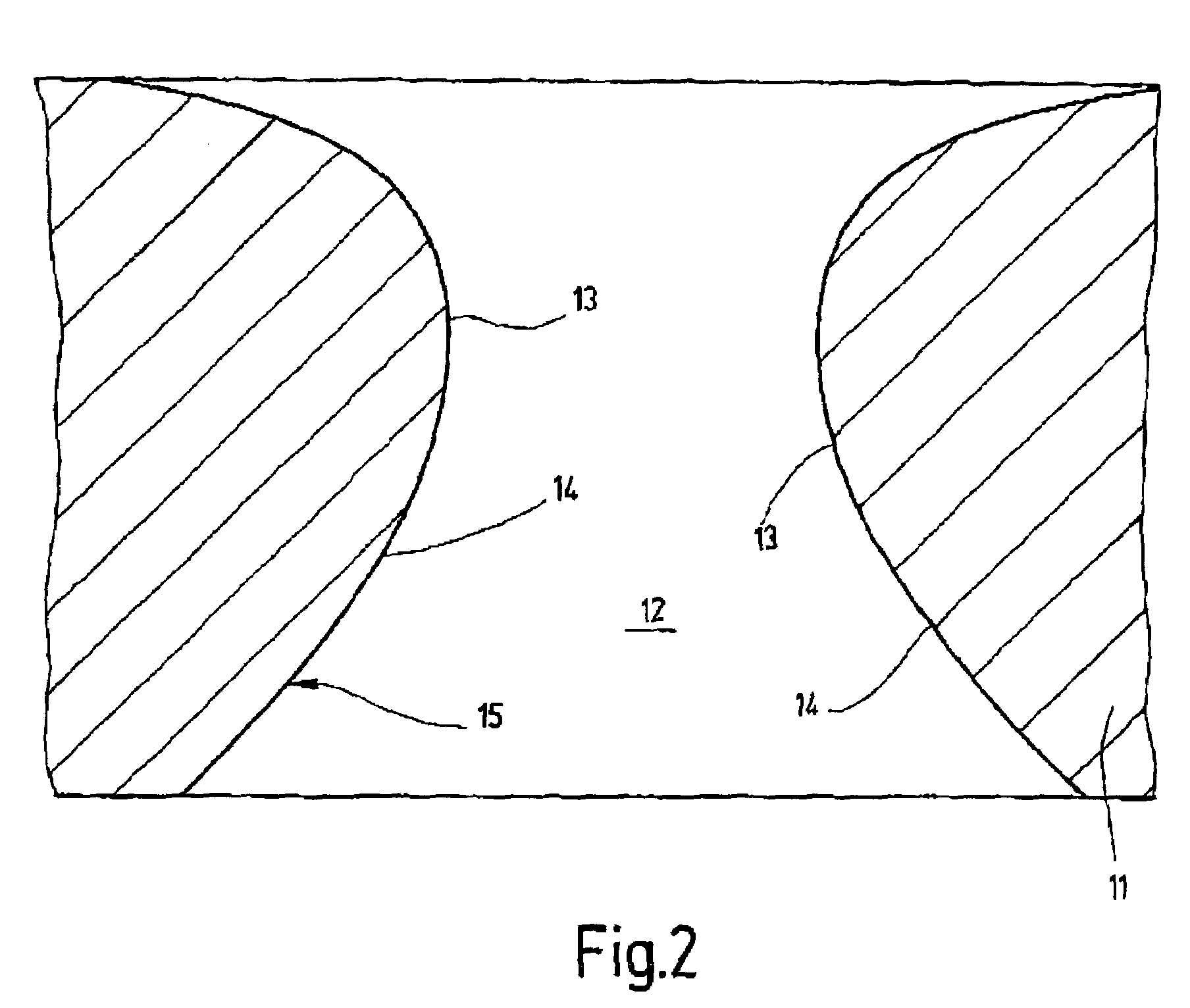Method for producing an adhesive closing element
a technology of closing element and adhesive, which is applied in the field of production of adhesive closing element, can solve the problems of high adhesive force and inability to clear
- Summary
- Abstract
- Description
- Claims
- Application Information
AI Technical Summary
Benefits of technology
Problems solved by technology
Method used
Image
Examples
Embodiment Construction
[0020]FIG. 1 schematically shows parts of a device for implementing a process according to an embodiment of the present invention. An extruder head 1 operates as the feed means for a plastic in a plastic or liquid state, especially a thermoplastic. The plastic is supplied to the gap between the pressure tool and a molding tool as a strip with a width corresponding to that of the adhesive closing part which is to be produced. The pressure tool is a pressure roller 3. The molding tool is a mold roller, designated as 5 in its entirety. The two rollers are driven in the directions of rotation shown in FIG. 1 by curved arrows 7 and 9. Between the rollers, a conveyor gap is formed through which the plastic strip is conveyed in the transport direction. At the same time in the gap forming the shaping zone, the plastic strip is molded into the backing 10 of the adhesive closing part. The backing 10 acquires the shape necessary for forming the interlocking means on the side adjacent to the mo...
PUM
| Property | Measurement | Unit |
|---|---|---|
| width | aaaaa | aaaaa |
| width | aaaaa | aaaaa |
| width | aaaaa | aaaaa |
Abstract
Description
Claims
Application Information
 Login to View More
Login to View More - R&D
- Intellectual Property
- Life Sciences
- Materials
- Tech Scout
- Unparalleled Data Quality
- Higher Quality Content
- 60% Fewer Hallucinations
Browse by: Latest US Patents, China's latest patents, Technical Efficacy Thesaurus, Application Domain, Technology Topic, Popular Technical Reports.
© 2025 PatSnap. All rights reserved.Legal|Privacy policy|Modern Slavery Act Transparency Statement|Sitemap|About US| Contact US: help@patsnap.com



